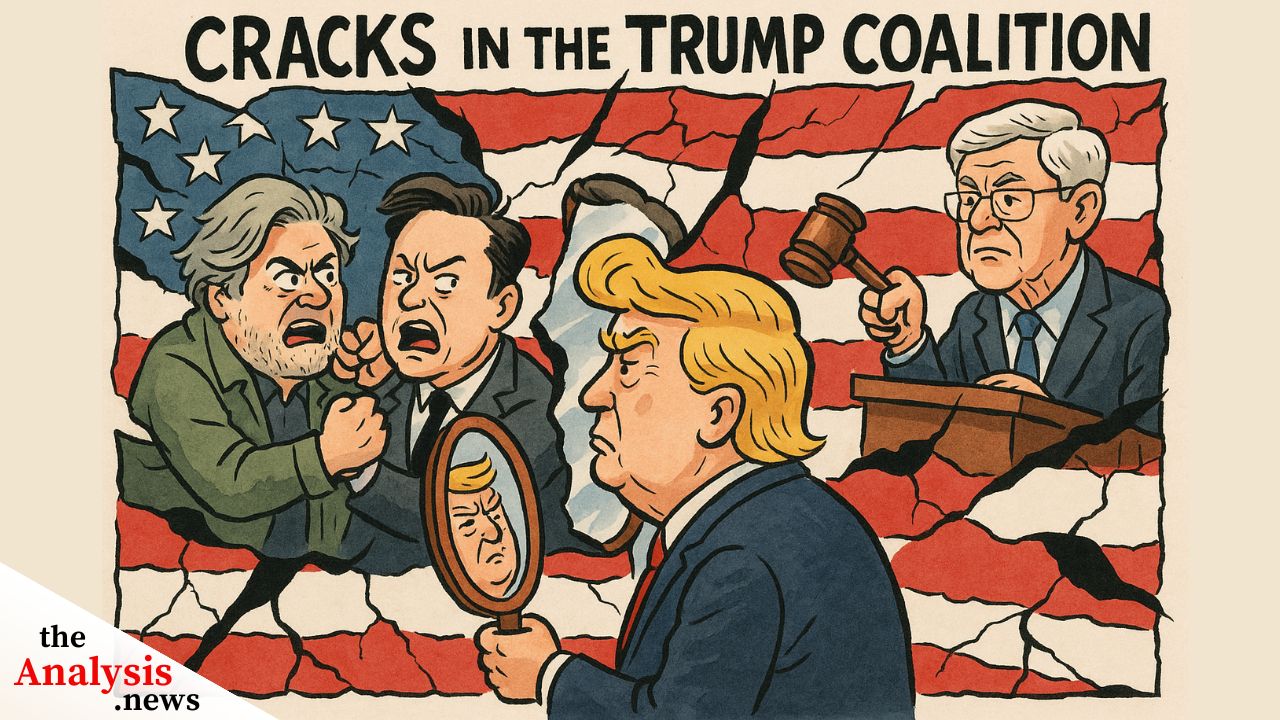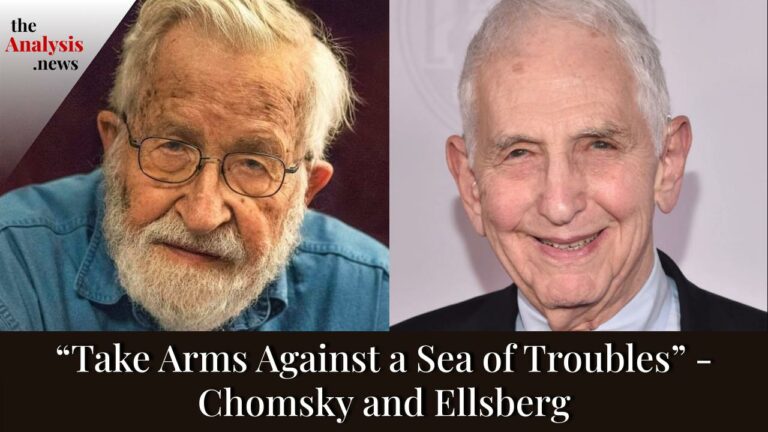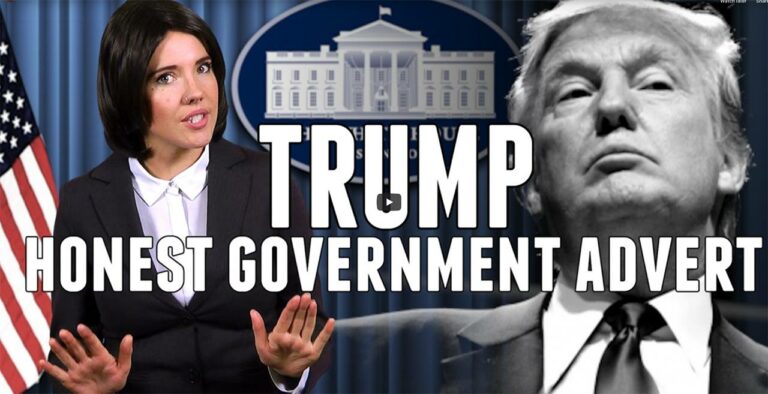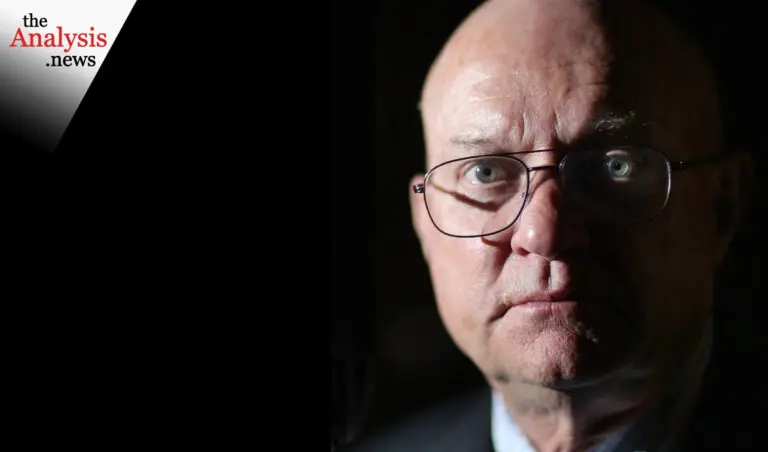Trump’s coalition is unraveling. What was once sold as a unified right-wing project is now fracturing into open conflict between legacy arms manufacturers, Silicon Valley militarists, Wall Street financiers, and ideological operatives like Bannon and Leonard Leo. As Trump’s chaotic tariffs wreck global supply chains, even key backers like Charles Koch and Peter Thiel are hedging their bets. Meanwhile, Corporate Democrats offer no real alternative—caught between donor loyalty and popular discontent. But beneath the elite infighting, there is a growing hunger for a real alternative—one rooted in democracy, solidarity, and working-class power. This episode exposes the fault lines of U.S. power—and why their shared refusal to confront climate catastrophe or nuclear danger puts us all at risk.
Part One – Trump Tariffs: The Madman Theory Applied to Economics (and what we should do about it)
Part Two – Boast About Jobs, Suppress Worker Power
Part Three – The Global Axis of the Far Right
Part Five – Building a Real Alternative: Get Organized
Podcast: Play in new window | Download | Embed
Subscribe Apple Podcasts | Spotify | Android | iHeartRadio | Blubrry | TuneIn | Deezer | RSS
Never miss another story
Subscribe to theAnalysis.news – Newsletter

The cracks in Trump’s coalition are no longer subtle. What once looked like a unified elite project—fusing nationalist rhetoric with deregulation, privatization, and militarization—is now fracturing into bitter rivalries and strategic confusion. The chaos of Trump’s tariff war is revealing fault lines not just between left and right, but within the right itself—especially among billionaires, think tank operatives, defense contractors, and rival factions of the military-industrial complex.
Many in the business elite thought they were getting a cunning Mussolini—a strongman who could impose discipline, smash the regulatory state, and deliver long-term returns. Instead, they’re watching a clown show: incoherent trade policies, internal sabotage, and a looming global recession driven by disrupted supply chains and political instability.
The Koch-Leo-backed lawsuit against Trump’s tariff authority is a prime example of this emerging revolt. A small Florida importer is challenging Trump’s use of emergency powers under the International Emergency Economic Powers Act (IEEPA), and the lawsuit is being funded by the New Civil Liberties Alliance—a libertarian legal group backed by Charles Koch and Leonard Leo. Koch has long attacked labor and regulation, but he also defends free trade as essential to capitalist stability. Trump’s chaotic tariffs threaten those interests.
But Leonard Leo’s involvement signals something deeper. As co-chair of the Federalist Society, Leo helped build the current right-wing supermajority on the U.S. Supreme Court—a judiciary Trump brags about but never fully understood. Leo’s support for this legal challenge suggests that the court may not be as loyal to Trump as he expects. While they’ve ruled in his favor on key ideological issues, the justices Leo cultivated are also committed to a particular vision of constitutional order and corporate power. If Trump’s actions begin to threaten that legal infrastructure—or the long-term interests of the capitalist class—even his own court may not back him.
These internal fissures go beyond law and spill into the foundations of the new war economy.
On one side are the legacy arms manufacturers—Lockheed Martin, Raytheon, Boeing—who dominate traditional Pentagon contracting. Their model depends on predictability: multi-year procurement plans, stable international alliances, and conventional state-to-state conflict. Their profits grow through a structured system of lobbying, bipartisan support, and established production.
On the other side is the Silicon Valley militarist bloc: Elon Musk’s SpaceX and Starlink, Peter Thiel’s Palantir and Anduril, and a new generation of AI and surveillance contractors. These firms thrive on disruption—privatized warfare, orbital weapons systems, autonomous targeting, and predictive policing. Their model is rapid, high-risk, and algorithmically driven. They don’t just want contracts—they want to reshape the military itself.
Trump’s tariff regime and militarized industrial policy align more with the tech-war Golden Con faction than with the old arms cartel. His rhetoric of self-reliance, China confrontation, and authoritarian statecraft fits Musk and Thiel’s ambitions—not Boeing’s.
The split between Elon Musk and Steve Bannon captures the broader contradiction. Bannon wants a protectionist, post-liberal America—tariffs, industrial autarky, and open economic warfare with China. Musk, by contrast, depends on global markets, including Chinese manufacturing and mineral supply chains, to sustain Tesla and SpaceX. While both thrive on disruption and share a taste for authoritarian rhetoric, their visions of power diverge: Bannon wants economic nationalism; Musk wants techno-empire without borders. It’s not a shared project—it’s a collision course.
The case of Boeing reveals just how schizophrenic elite interests have become. On one hand, Boeing profits handsomely from arms sales to Taiwan and benefits from the heightened U.S.-China tensions that make those sales politically viable. On the other hand, China has been one of Boeing’s largest commercial aviation markets. Under Biden, this balancing act held: tensions with China remained high enough to justify military sales, but commercial aircraft deliveries to Chinese airlines continued.
Under Trump, that equilibrium has collapsed. In 2025, after Trump imposed sweeping new tariffs on Chinese goods, Beijing retaliated by freezing deliveries of over 160 Boeing jets, including 737 MAXs and long-haul 787s—a loss worth tens of billions of dollars. Now Boeing is scrambling to offload those planes to India and other markets.
Meanwhile, the company dares not alienate Trump—whose administration controls access to lucrative Pentagon contracts—even as his economic war on China undermines Boeing’s broader business model. Trump threw Boeing a bone in March 2025: a $20 billion contract from the U.S. Air Force to develop the Next Generation Air Dominance (NGAD) fighter jet, designated the F-47.
What Boeing wants is clear: to have its cake and eat it too—to profit from the threat of war while also cashing in on peacetime trade. But that balancing act is collapsing. And Boeing is finding, like much of corporate America, that Trump’s version of militarized capitalism offers fewer escape routes than they imagined.
This leaves Wall Street increasingly uneasy. Major asset managers like BlackRock and Vanguard have exposure across both sectors—but they value global integration, legal stability, and central bank credibility. They cheered Trump’s tax cuts and deregulation. But now, they’re watching the tariff-driven chaos with growing alarm. There is a strategy behind it—a realignment of the global economy around militarized nationalism and elite authoritarianism—but it’s being implemented not through discipline, planning, or statecraft, but through Trump’s ego, impulsiveness, and personal vendettas.
That’s their nightmare: not just geopolitical confrontation, but that it’s being triggered by a man who treats the global economy like a grudge match. They were willing to live with the madman as a tactic—a disruptor who kept the public off balance while the machinery of profit rolled on. But now, they’re beginning to fear that the man is actually mad—and that the system they built may not survive him.
Even Peter Thiel, who once bankrolled Trump’s rise, is hedging his bets. While he remains invested in the war economy through Palantir and Anduril, he’s pulled back from directly funding Trump’s campaigns. More importantly, he’s positioned his closest political protégé—J.D. Vance—as Trump’s vice president. If Trump implodes, Thiel’s influence survives. If Trump delivers, Thiel profits. Either way, the hedge is in place: distance from the clown show, and a direct line to power if it collapses.
In the end, Trump’s coalition was always a fragile alliance: old capital and new tech, Wall Street and Christian nationalism, fossil fuels and surveillance capitalism. That alliance is now fraying—legally, economically, and ideologically.
As much as these factions fight each other for power and influence, one thing unites them: they are all for weakening unions, lowering wages, and intensifying how much sweat and blood they can wring out of the workers. They are also united in their refusal to phase out fossil fuels and build sustainable energy systems at the scale needed to avoid climate catastrophe. And they share a willful denial—or cynical indifference—about the growing threat of nuclear war. Whether by omission or design, the existential risks facing humanity are subordinated to short-term profit, elite rivalry, and the maintenance of their power.
A further symptom of the disarray gripping elite politics is the shambles of the Democratic Party. There is no leader, no vision, and its congressional leadership is increasingly seen as a relic—at best irrelevant, at worst complicit. The party’s most energized and hopeful current—around Bernie Sanders, Alexandria Ocasio-Cortez, and the broader democratic socialist movement—is treated not as a resource but as an enemy. Many Corporate Democrats hate the left more openly and more bitterly than they hate the right, because the left doesn’t just threaten their power at the ballot box—it threatens funding from Wall Street and their hold on the entire system.
Corporate Democrats face an impossible dilemma: how do they address the real concerns of working families without further alienating their Wall Street funders? The tension plays out in every election cycle, where populist language is deployed to win votes while behind closed doors donor priorities take precedence. In 2022, then-Speaker Nancy Pelosi bluntly remarked, “We’re capitalists, and that’s just the way it is,” when asked about taxing the wealthy. And while Biden’s mild New Deal-style reforms—such as the expanded Child Tax Credit and infrastructure investments—were touted as historic, their expiration or rollback under pressure from business lobbies revealed just how tight the leash remains. To truly tackle inequality and the climate crisis, Corporate Democrats would have to choose confrontation with the very interests that finance their campaigns. Even the mild New Deal-style reforms of the Biden administration led much of Wall Street to withhold support. But to tackle inequality and the climate crisis seriously, that’s exactly what they would have to do.
And that’s the point of rupture we now face, between a decaying bipartisan elite that can no longer hold the center, and a growing hunger for a real alternative—one rooted in democracy, solidarity, and working-class power.
The existential threat of the climate crisis looms over everything yet is almost completely ignored.
This is the end of part four. In the next section I’ll look at what I think we need to get out of this most dangerous moment, and what efforts are taking place that give me hope and even some optimism. I’ll suggest some things we can all do to get engaged, and I hope will lead to a discussion that will help theAnalysis.news make a more useful contribution.






Two basic comments: What you’ve written is pretty well laid out. However, you ignore the concept of Empire; both that of the US and China. The US has dominated the world (outside of the Soviet Empire until 1991) since 1945; the Chinese are challenging it. Chinese are wanting to equal and then surpass the US without blowing everything up; the US is not accepting this, and both are operating on a global scale. A misstep–say around South China Sea or Taiwan–and we’re all in deep shit. (That’s why an analysis limited to capitalism is too limited; it ignores the struggle for global domination.)
Second, where is the AFL-CIO leadership? They got caught depending on the US government for their operational capability–all done behind the back of their members–and after about $1 BILLION since 1983, and since Trump killed USAID and National Endowment for Democracy (NED), the AFL-CIO lost over 90% of their international operations funding. No one–except LEPAIO (Labor Education Program on AFL-CIO International Operations) at https://aflcio-int.education/ has even tried to bring attention to this. No international union leader is even discussing this. If workers are getting fucked–and they are!–where are the people and organizations supposedly defending them/advocating for their interests???
Nuclear war is getting closer by the day. A quote from “A Canticle For Leibowitz”:
Ch 4
It was said that God, in order to test mankind which had become swelled with pride as in the time of Noah, had commanded the wise men of that age, among them the Blessed Leibowitz, to devise great engines of war such as had never before been upon the Earth, weapons of such might that they contained the very fires of Hell, and that God had suffered these magi to place the weapons in the hands of princes, and to say to each prince: “Only because the enemies have such a thing have we devised this for thee, in order that they may know that thou hast it also, and fear to strike. See to it, m’Lord, that thou fearest them as much as they shall now fear thee, that none may unleash this dread thing which we have wrought.” But the princes, putting the words of their wise men to naught, thought each to himself: If I but strike quickly enough, and in secret, I shall destroy these others in their sleep, and there will be none to fight back; the earth shall be mine.
Such was the folly of princes, and there followed the Flame Deluge.